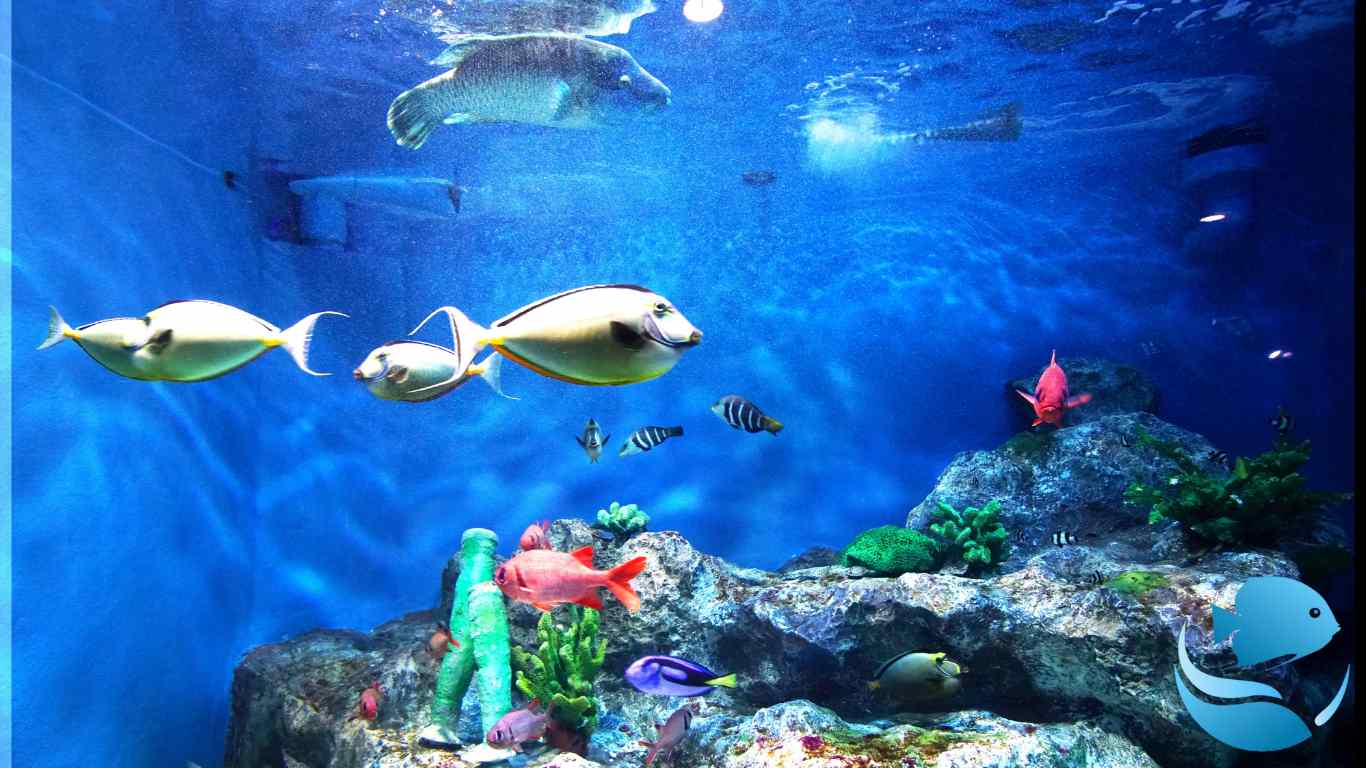
The well-being of fish starts with a clear living environment. This applies to all species in general, including those living in an aquarium. It is possible to have crystal clear water even in an enclosed habitat. We show you some practical techniques to achieve this.
Wait a week
What would be your first reaction to yellowish water? The first solution is to allow several days for the aquarium to clean itself. That’s right, this closed environment is able to regenerate itself slowly in a natural way. After a week, the quality of the liquid improves visibly.
It is important to know that this phenomenon is caused by the activities of the fish. As the fish move around, the grains at the bottom of the pond will be lifted up. A cloud of yellowish dust is then formed, which disturbs the house. After a few hours, everything will be back to normal when the water starts to rest again.
Wipe down the aquarium glass
Simply wiping the glass improves the quality of the liquid just a little. It doesn’t clean the entire environment, but it does improve your visibility.
So take the time to scrub the walls of your tank from the inside with a clean sponge. You don’t have to drain the fluid from the tank for this task. Just keep your hands and arm clean. That way, you won’t contaminate the water for your beloved fish.
Use a better aquarium pump
This accessory ensures the proper functioning of the pond. The tap water passes through this device before entering the tank. In this way, the liquid will be purified to 95% and the flora and organic residues will be removed.
Without this aid, the fish will bathe in an unclean composition. Similarly, a bad device will also lead to the same result. As a solution, buy a better aquarium pump. This will ensure crystal clear water in your pond. Alternatively, you can clean your aquarium pump regularly to increase its efficiency.
Change 20-30% of the water every week
How to have clear water in your aquarium? This environment is 90% unnatural. Without your intervention, dirt will gain ground in the container. This leads to cloudy water, suffocating the species living in it.
The most effective solution to regulate this environment is to renew some of the liquid. To do this, remove 20-30% of the water and replace it with a clean, filtered composition.
To do this, suck up the fluid with a hose while keeping an eye on the fish. You can stop when the level of the fluid drops to about ¾ of the volume of the container. In the same way, then pour purified water into the tank with another pipe.
Wash the aquarium filter
A poorly maintained filter can cause gray water. This accessory is placed inside or outside the container and continuously retains impurities in the fish habitat. Therefore, when this element shows signs of failure, the whole liquid pays the price and becomes more and more unhealthy.
What can you do to overcome this obstacle? Check your filter regularly, once a month. In the first instance, this may involve a brief cleaning of the various components. In the second case, it is possible that the sponges are worn out and no longer function properly.
Live plants
Decorative accessories in an aquarium do not contribute to the cleaning of the liquid inside the aquarium. Real aquatic plants, on the other hand, have a beneficial effect on the condition of the house.
They feed on the organic matter released by the fish into the fluid. They participate in the purification of the aquatic environment. They play the role of cleaner to keep the water transparent. In this case, add as many natural plants as possible to your aquarium. And to keep them alive, remove dead parts such as leaves and roots immediately.
Limit the number of species to 1 per liter of water
An aquarium can suffer from overcrowding. This in turn leads to cloudy water in this environment. The more fish in the tank, the faster the excrement will take up space. Indeed, the latter will dissolve more slowly.
Generally speaking, count on about 1 liter of water for one species. This is the bare minimum for a living being to survive. Obviously, some specimens manage to live in piles like sardines. However, this is not the case for small amphibians.
In short, if you have a 90l aquarium, reduce the number of individuals in your tank to 30. Be aware that plants take up a lot of space, which reduces the volume of water actually poured into the container.
Relocate your aquarium
Due to lack of location, the aquarium reacts strangely to external conditions. Exposure to sunlight promotes the formation and growth of algae inside your tank. These plants do not make the tank water clearer. They also do not help the filter’s action on the liquid.
Therefore, you should remove as much algae as possible from your fish tank. Most importantly, you will place your aquarium in a bright location away from direct sunlight. This way, you will slow down the growth of these unwanted plants in your tank.
Reduce the amount of fish food
Excess food that is not ingested by the fish forms additional waste in an aquarium. The food gradually decomposes until it affects the transparency of the water. To overcome this concern, simply regulate the amount of pills for your critters.
You should know that they can go several days without eating. In fact, fasting twice a week does not hurt them. On the contrary, it improves their appetite.
Further reading
How to make a biological filter for aquarium
- Feeding Eggs To Fish - December 27, 2022
- Cure Swim Bladder Disease In Fish - December 27, 2022
- Can Damaged Fins Grow Back? - December 27, 2022
